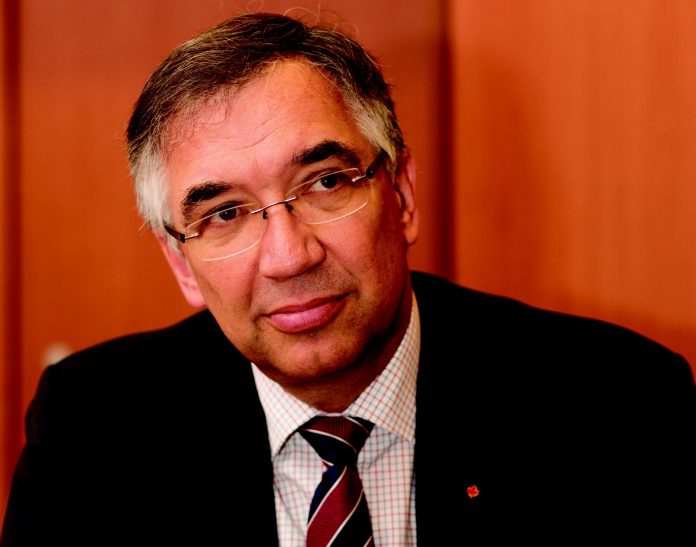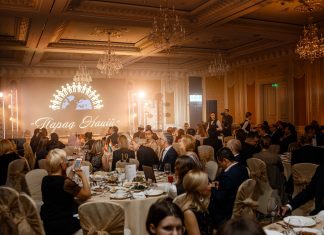Extraordinary and Plenipotentiary Ambassador of Canada in Ukraine, Mr. Roman Vashchuk, has informed the FD about military cooperation between Canada and Ukraine, about the Ukrainian culture that is perceived in Canada and how Ukraine can impress the foreign diplomats.
Free trade zone between our countries has already been established. In March 2018, the Canadian government issued a statement saying that the visa-free regime with Ukraine was not on time. When the times for a visa-free regime between our states will come.
– The time for introducing of the visa-free regime between the countries comes depending on a number of circumstances and on the particular economic, political or immigration pressure that these countries have. For example, the visa regime with neighbouring countries of Ukraine, namely Bulgaria and Romania, was canceled in December last year. These countries have been in the European Union for some time, but they are not part of the Schengen zone – however, we have canceled visas for the citizens of these countries. In the process of establishing of the visa-free regime there should not be and cannot be any automatism or any successive skillful program with an infinite number of different requirements. Rather, we have been talking about the proper conclusions of our experts that have to conclude that the overwhelming majority of citizens of a given country who get visas to Canada are honest citizens, businessmen that are eager to cooperate with us or tourists that want to see places of interest in our country – but not potential illegal migrants. The visa-free regime between Ukraine and the countries of the European Union is certainly perceived as a positive factor for us; we continue to monitor the situation of those Ukrainian citizens that visit Canada and, depending on the results of this monitoring, a decision will be made to establish a visa-free regime with your country.

The Canadian Embassy pays significant attention to the observance of human rights in Ukraine. How far is the situation with respect to these rights meet the global standards?
– Ukraine has suffered through the Revolution of Dignity. The consequences of this Revolution foresee not only the expectations, but also certain obligations from the part of the Ukrainian state to ensure the rights of minorities.
For example, the rights of certain religious communities, such as the rights of the Jewish community, are respected at the proper level.
This community has been actively developing and can spread its activities. Unfortunately, in recent months we have seen a dangerous tendency – I mean the attacks on the settlements of the Gypsy people. Extremist groups that commit such attacks use not only national but also social factors to justify their violent actions.
We would like to see a very clear position of the state regarding similar manifestations of violence – on the one hand, we would like to see that the state solves the social problems of the Gypsy minority, and on the other hand, we would also like to witness that the state does not allow extremist groups to pursue their political career by violence. Also, we observe that the activity of the LGBT community has revived in Ukraine. This year, Kyiv-Pride was more numerous than last year – but we also see that the activity of the LGBT community is fraught with misunderstanding and the aggression of a certain part of the Ukrainians. As a result, we do not expect Ukraine to be rapidly transformed into another country, but we want to ensure that the space for freedom and security for minorities is secured. This is our priority.
Ukraine and Canada provide active cooperation in the sphere of security. Which of the new security projects and new activities has been planned this year?
– We have been extending our cooperation with Ukraine in the military sphere annually. We have been making the geography of this collaboration wider. The largest number of Canadian military personnel in Ukraine is located in the territory of the Lviv region, on the Yavoryv landfill. But there are another 10 locations where Canadian troops are present. In particular, in Odessa, Canadian militaries teach at the military academy. They create new training programs for cadets. We believe that it is time to move from joint military exercises to the development of joint military-strategic directions.
We also elaborate with the inclusion of Canadians into Ukrainian defensive and security structures. For example, the commandant of one of the military colleges in Lviv is Canadian. During this year’s military exercises, the entire Canadian platoon was subordinated to the Ukrainian battalion. This was the first time that Canadian troops were under the Ukrainian command. So we are trying to maintain an appropriate level and to strengthen our militarysecurity cooperation. I would add that the Commander of the Canadian Armed Forces, General Vinnyk noted that this summer during military exercises in the province of Albert, the Canadian military used for the first time the experience of the Armed Forces of Ukraine that had been obtained in the East of Ukraine.
Ukraine has been facing not only the military but the informational aggression either. One of the most dangerous projects of the Russian Federation that is directed against our state is the construction of the “North Stream” gas pipeline. What is Canada’s official position regarding this project?
– We have not elaborated our detailed position regarding this yet. Of course, we are not enthusiastic about any measures that would diminish the energetic or national security of Ukraine. Definitely, we will formulate our position towards the construction of the Russian gas pipeline mentioned by you, but taking into account the particular irritation of issues related to energy security, we have to take into account a number of factors, both economic and political, in shaping of such position. At least, we have not said our final word.
How intensive is the student exchange between our countries?
– Last year, 2800 Ukrainian students studied in Canada. Canadians of Ukrainian origins that are interested in learning the culture and history of their historical motherland, study in Ukraine as well, but their number is not so big. We may say not about thousands and not even about hundreds, but about dozens of students. The point here is not only in the format of training, but also, in the visa policy of the Ukrainian state. I can tell the case about ten Canadian girls and boys that have expressed their desire to study Ukrainian dances in Ukraine. For 10 months, we have tried, by involving different state institutions of your country in cooperation, to work out for these young people the visa status that would allow them to fulfill their dream. Therefore, we would very much like the Ukrainian state to make adjustments to its visa policy, providing more favourable conditions for those foreigners (including Canadians) who have a desire to study, to run business or to work in Ukraine.
Canada has one of the most numerous Ukrainian diasporas in the world. Is there interest to Ukraine and to Ukrainian culture in Canadian society (and among Canadians of non-Ukrainian origin)?

– Certain elements of Ukrainian culture, in particular dances have already been considered as the regional features of the Canadian West.
Thus, the inhabitants of the province of Quebec who are of French descent are identified, first of all, not with France, but with the province where they live. So then the same can be referred to the Ukrainians in the provinces of Alberta and Manitoba. They are precisely identified with these provinces. For example, during an election campaign in Alberta, local politicians conducted this campaign by placing their photos in the press on which they were depicted in the Ukrainian national uniforms. And amidst them were not only people of Ukrainian descent. In many provinces, Ukrainian dance ensembles are the main form of cultural activity of the Ukrainian community, and again, not only those Canadians with Ukrainian roots belong to these ensembles. In particular, the most famous of these ensembles, “Shumka” from Edmonton, made a joint artistic program with representatives of indigenous people.
It was an excellent symbiosis of indigenous Canadian dances and Ukrainian dances. The joint artistic program was a very important part of the humanitarian agenda of the Canadian Government with regard to indigenous peoples that had been marginalized for a long time.
Do you visit Ukrainian resorts when you have time of vacations?
– Last summer, I visited Poltava region together with my children. We were near Dykanka, there was built a stylized Ukrainian farm for tourists. They are treated with delicious Ukrainian dishes. Several times I visited Bukovel.
I often come to Lviv. There are many events that are organized by our Embassy, in particular, the Ukrainian–Canadian Investment Forum. One of our projects in Lviv is the IT-park that has been opened in May this year. Also, I visited Odessa, but not for the leisure. The aim of my visit was the Canadian Military Medical Mission in Odessa that has been working at a local military hospital.
Last autumn I was fortunate enough to visit the wonderful unique reserve “Askanya Nova” that, in fact, requires much more advertising.
Can we say that Ukraine, in general, does not use its tourist potential?
– Ukraine, in general, is a country of unused potential and, in particular, in tourism. Here is just one example. The Khmelnitsky region is a true treasury of historical monuments that could become a significant tourist asset. But so far little is known about this place. I was also lucky enough to visit Kozelets, a small town in Chernihiv, in which there is a magnificent cathedral and there are many attractions associated with the Razumovsky family, but it does not have a modern tourist infrastructure.
Ukraine needs a lot of work to make its historic pearls easier to be got and more comfortable for foreigners. Travelling around Chernihiv region, together with the ambassadors of the G-7 states, I saw with my own eyes that many of my colleagues discovered Chernihiv and, in fact, Chernihiv is a very historic and very interesting city. Ukraine has something to surprise the world with. You just have to work – systematically and persistently.













